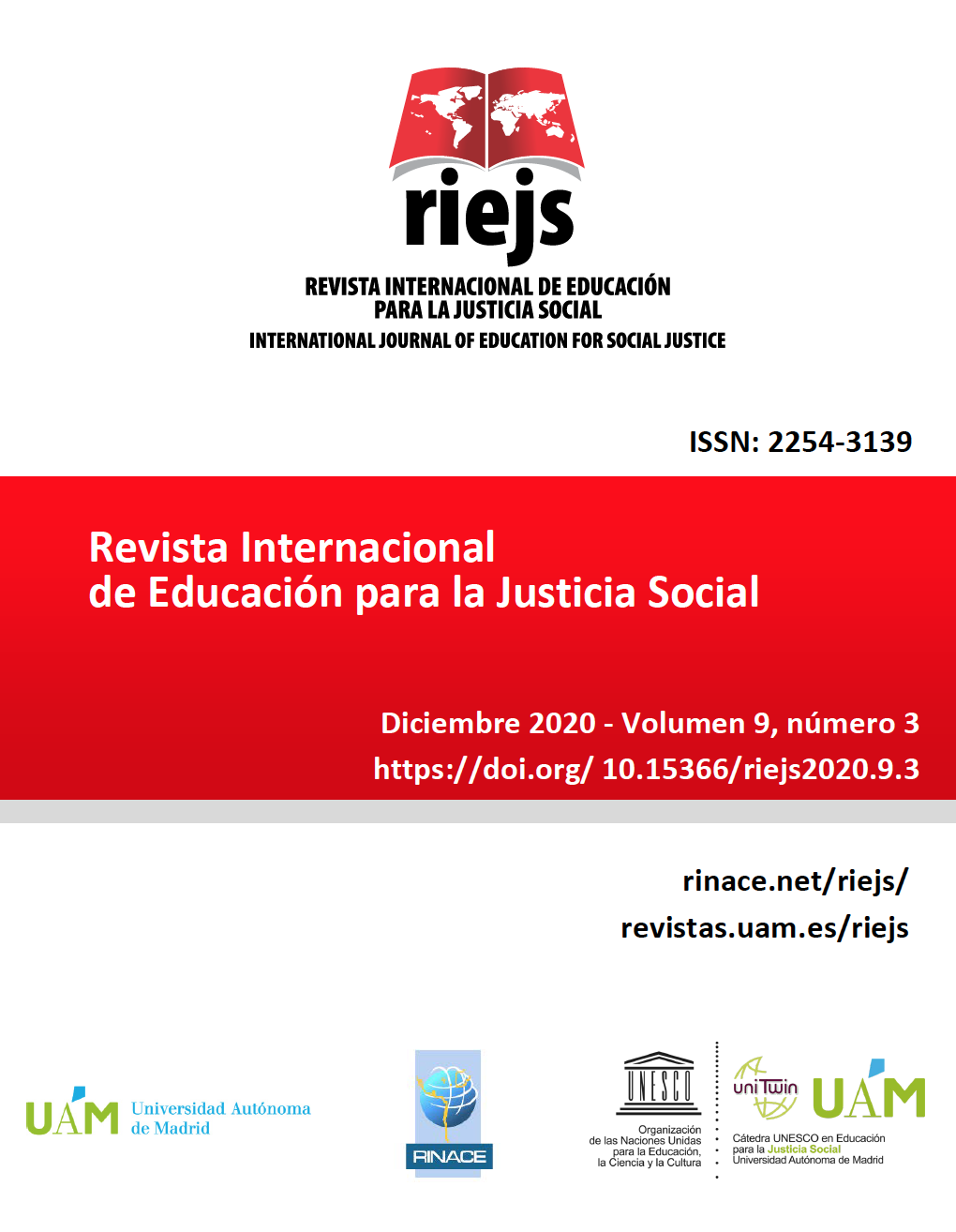Keywords:
Right to education, Pandemic, School closures, Education policies, Distance learning
This work is licensed under a Creative Commons Attribution-NonCommercial-NoDerivatives 4.0 International License.
Abstract
This article focusses on the implications that the Coronavirus Pandemic (COVID-19) has had on the right to education. From an international point of view, it is taking some educational indicators to see how schooling was affected during the coronavirus outbreaks, and how pedagogical dimensions of the right to education are neglected consequently. At the beginning, I undertook a systematic review of the definition of the concept of right to education from both, the human rights based approach, and also, according to the State responsibilities to guarantee to people the access to formal education. Then, I analyzed the educational consequences of school closures from macro- and micro-level perspectives. The purpose here is to measure the pedagogical implications that distance learning programs (through digital learning platforms) could have on the right to education when they are implemented by governments and institutions, in short time. That is to say without enough teaching planning beforehand. Finally, I explored some scenarios and challenges that States and authorities should face in order to guarantee the right to education as a constitutional human right.
Downloads
References
Aldao, M. y Clérico, L. (2019). La igualdad “reformada”: La igualdad “des-marcada”. En N. CardinauxyL. Clérico (Comps.),Formación de jueces: Su adecuación a un modelo de sociedad igualitaria(pp. 193-216). EUDEBA.
Altbach, P. y Kelly, G. (1986). New approaches to comparative education.The University of Chicago Press.Bobbio. N. (1993). Igualdad y libertad. Paidós.Bolívar, A. (2005). Equidad educativa y teorías de la justicia. REICE. Revista Iberoamericana sobre Calidad,Eficacia y Cambio en Educación, 3(2), 42-69.
Burbules, N. y Callister, T. (2001). Educación: Riesgos y promesas de las nuevas tecnologías. Granica.
Cardona, D. (2017). Reseña. Horizon report 2017 higher education.https://doi.org/10.5209/TEKN.58102
Cobo, C. (2016). La innovación pendiente. Reflexiones (y provocaciones) sobre educación, tecnología y conocimiento. Penguin Random House.
Cobo, C. (2019). Acepto las condiciones. Usos y abusos de las tecnologíasdigitales. FundaciónSantillana.
Cohen, A. (2017). Analysis of student activity in web-supported courses as a tool for predicting dropout. Educational Technology Research and Development, 65, 1-20.https://doi.org/10.1007/s11423-017-9524-3
Couzin-Frankel, J. (2020).Does closing schools slow the spread of coronavirus? Past outbreaks provide clues.Science, 0-84. https://doi.org/10.1126/science.abb6686
Dans, E. (13 de abril de 2020).The coronavirus pandemic has unleashed a revolution in education: From now on, blended learning will be the benchmark.Revista Forbes.https://www.forbes.com/sites/enriquedans/2020/04/13/the-coronavirus-pandemic-has-unleashed-a-revolution-in-education-from-now-on-blended-learning-will-be-the-benchmark/#44ecfeb6536f
Darling-Hammond, L. (2001). El derecho de aprender. Crear buenas escuelas para todos.Ariel.
Dewey, J. (1970). Democracia y educación. Losada.
Fundación COTEC.(2020). COVID-19 y educación: Problemas, respuestas y escenarios.https://online.flippingbook.com/view/967738/12/
Guttman, A. (2001). La educación democrática. Una teoría política de la educación.Paidós.
IESALC.(2020). COVID-19 y educación superior. De los efectos inmediatos al día después. Análisis de impactos, respuestas políticas y recomendaciones.http://www.iesalc.unesco.org/2020/04/14/iesalc-insta-a-los-estados-a-asegurar-el-derecho-a-la-educacion-superior-en-igualdad-de-oportunidades-ante-el-covid-19/
Jackson C.,Vynnycky E.,Hawker J., Olowokure, B. y Mangtani, P. (2013). School closures and influenza: Systematic review of epidemiological studies. British Medical Journal Open,3, e002149. https://doi.org/10.1136/bmjopen-2012-002149
Lion, C. (2019). Los desafíos y oportunidades de incluir tecnologías en las prácticas educativas. Análisis de casos inspiradores. IIPE.
Lion, C.,Mansur, A. yLombardo, C. (2015). Perspectivas y constructos para una educación a distancia re-concebida. Revista del Instituto de Investigaciones en Ciencias de la Educación, 37, 101-117.
Litwin,E. (Comp.).(2000). La educación a distancia. Amorrortu.
Maggio, M. (2012). Enriquecer la enseñanza. Los ambientes con alta disposición tecnológica como oportunidad. Paidós.
Maggio, M. (2018). Reinventar la clase en la universidad. Paidós.
McCowan, T. (2013). Education as a human right. Principles for a universal entitlement to learning. Bloomsbury.
Meyer, J. y Ramírez, F. (2010). La educación en la sociedad mundial. Teoría institucional y agenda de investigación de los sistemas educativos contemporáneos. Octaedro.
Pablo Pons, J. de (2006). El marco del impacto de las tecnologías de la información. Herramientas conceptuales para interpretar la mediación tecnológica educativa. Revista Telos, 67, 31-56.Pablo
Pons, J. de (Coord.).(2009). Tecnología educativa, la formación del profesorado en la era de Internet. Aljibe.
Ruiz, G. (2020). El derecho a la educación: Definiciones, normativas y políticas públicas revisadas. EUDEBA.
Tomasevski, K. (2001). Human rights obligations:Making education available,accessible,acceptable and adaptable. Novum Grafiska AB.
Tröhler, D. y Lenz, D. (Comps.).(2015). Trayectorias del desarrollo de los sistemas educativos modernos. Entre lo nacional y lo global. Octaedro.
UNESCO.(2020). Interrupción educativa y respuesta al COVID-19.https://es.unesco.org/covid19/educationresponse
Viner, R.M., Russell, S.J., Croker, H., Packer, J., Ward, J., Stansfield, C. ... yBooy, T.(2020). School closure and management practices during coronavirusoutbreaks including COVID-19: Arapid systematic review. The Lancet Child & Adolescent Health, 4, 397-404.https://doi.org/10.1016/S2352-4642(20)30095-X
Williamson, B. (2018). Big data en educación. El futuro digital del aprendizaje, la política y la práctica. Morata.

